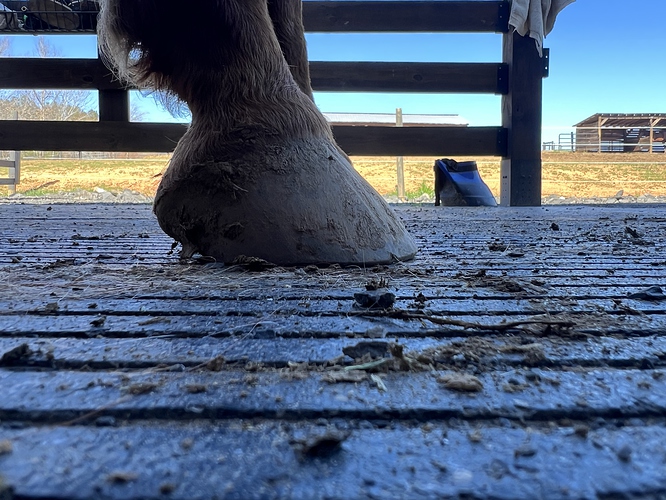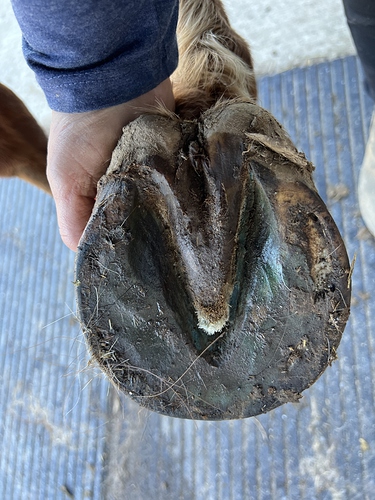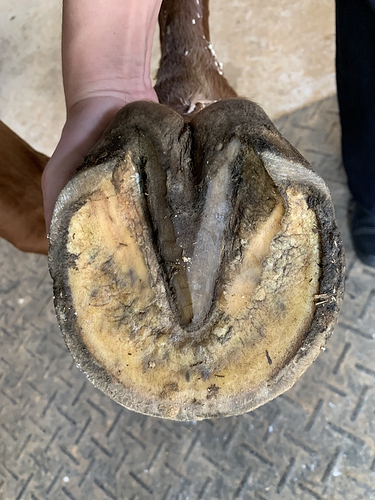Is that related to Daisy herself and how she works, or is it because the trimmers were taking short courses that didn’t really give them the skills to work on other people’s horses? I know nothing about DB other than seeing her name on barefoot discussion groups, she’s nowhere near me. Her advice always seemed in line with what my trimmer says and does, trimmer did a good 2 year community college farrier program years ago. But I never looked further at DB, when I wonder about things my main resource is Pete Ramey’s materials.
I do try to avoid self taught or short-course trained trimmers. I think if you have the physical aptitude you can learn to trim your own horses with some trimmer oversight, especially as you can do a little bit constantly and not cause problems. But it’s a big jump to analyzing the issues in an unfamiliar horse and correcting them in one session.
So it’s possible DB has some questionable tactics, but also possible that her courses aren’t long or rigorous enough to turn out really competent professional trimmers.
One of my barn friends drifted away from the very competent trimmer I use and went with a self trained dude with a good YouTube presence. After 4 or 5 years she is back with the competent trimmer getting the run forward heels under control.
There are lots of half trained or self trained trimmers out there who proclaim that “this or that isn’t taught in farrier school.” With DB, she said that about “slippering” heels which is just what my very competent trimmer calls “opening up the bars.” I sent my trimmer a link to double check and she agreed. Anyhow, whenever a self styled alt practitioner someone says “I have this secret skill that I developed that professionally trained people in my field never learn,” and it turns out to be something that competent professional people all learn and do, I lose a little bit of confidence. Either they are just really ignorant of the parameters of their chosen profession, or they are deliberately scamming and lying. So after that I lost interest in DB on SM because I figured I wasn’t going to learn anything both new and true.
That might be unfair, but I can’t follow everyone online and just get the same old same old questions back and forth.
DB may be a great trimmer in her own right and may well offer courses that help owners work on their own horses in a useful way.
I’ve found that my hand strength and arthritic fingers means I can rasp only a bit each day and I can’t make any impact with a hoof knife on the wall or bars, and hoof clippers are a bit random, though I can take off obvious chunks that need to be gone. So I have given up on any idea of really learning to trim, though I know a fair bit about how it should look.





 . he didn’t touch her with the rasp. Honest to Pete. Once all that old sole was gone, she had a lot of wall that needed to go…not to mention, I looked at her from behind a day later and noticed my feeble attempts from that day left her heels on the right front about 1/4” higher than the left. Yeah, they were fine.
. he didn’t touch her with the rasp. Honest to Pete. Once all that old sole was gone, she had a lot of wall that needed to go…not to mention, I looked at her from behind a day later and noticed my feeble attempts from that day left her heels on the right front about 1/4” higher than the left. Yeah, they were fine.

